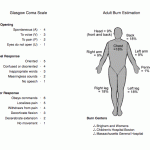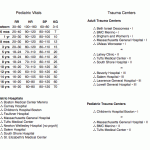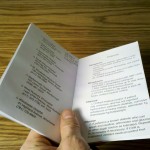There are services that carry teddy bears or other friendly objects with which to palliate their pediatric patients. I think this is a neat idea, but due to cost and infection-control issues, it’s not exactly a universal piece of equipment, so the rest of us have to make do with what we’ve got.
I started handing out glove balloon creatures a year or two back. They’re not for infants or the very young, but okay for anyone who can be trusted not to choke on a rubber glove, and I’ve always had a good response. You can make it in front of them while they watch curiously, then present it with a flourish. Click below for an ultra-high-production-value tutorial video featuring yours truly.
I always name my glove animals, and for some reason mine always end up with Hispanic names. Maybe I’m a glove racist.
One possibly surprising category of patients who may appreciate these is the older (stable, obviously) psych patient. I’ve made several of these for teenaged girls during transfers to inpatient psychiatric care for suicidal ideation, and although it didn’t cure what ailed them, it seemed to help. Thom Dick writes about telling suicidal patients, “Please don’t die.” In the same vein, a small gesture like a balloon — something they can carry with them, even if only for a while — seems to help show them that there are people in the world who do care about what happens to them. One girl, who was otherwise quiet and withdrawn, clutched hers (“Juarez,” as I recall) tightly to her chest and stridently refused to let it be taken it from her, even as she had to surrender her clothing, belt, and shoelaces. BLS care? I think so.



Recent Comments